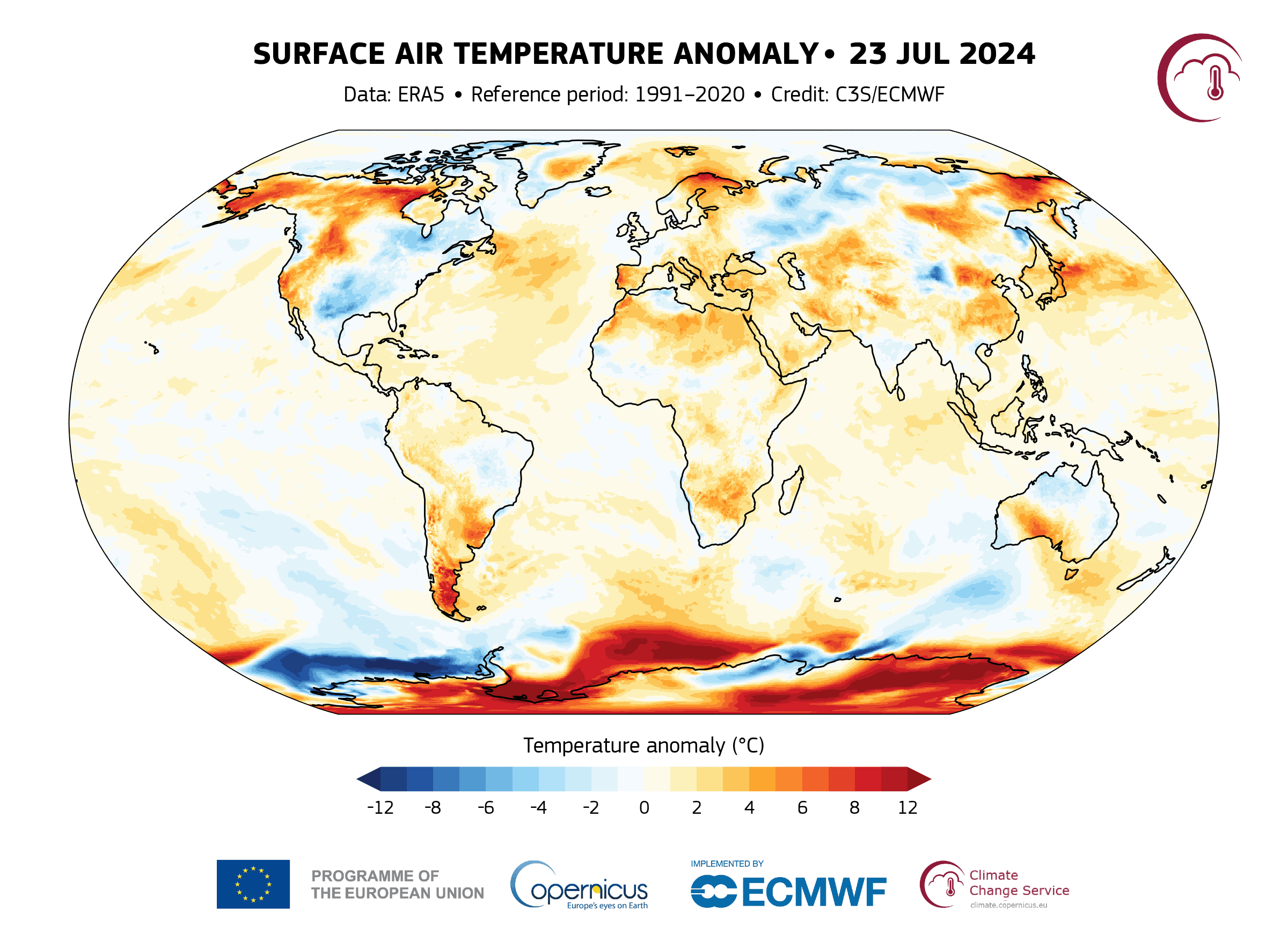Huge chunks of Antarctica have recently been slapped with (potentially) record-breaking warm temperatures that have lingered for a worryingly long time.
New data from the European Union’s Copernicus Climate Change Service shows that large parts of the ice-covered continent experienced temperatures that were 10 to 12°C (18 to 21.6°F) above average for this time of year in late July 2024, compared to the 1991-2020 reference period.
Provisional data from the Syowa station and Halley station also suggests they may have broken their previous temperature records for July/August, while some days in East Antarctica showed temperatures that were 25°C (45°F) above average.
These anomalies sound shocking, but it’s the length and scale of the heat that’s concerning scientists.
“In Antarctica, it’s unsurprising to have a day at some point in the winter (roughly June to August) where the temperature reaches ~25°C [45°F] above normal for the time of year somewhere on the continent. What is remarkable is prolonged high temperatures occurring over a large sector of east Antarctica from the second half of July and into early August, combined with warm surface temperatures offshore,” Thomas Caton Harrison, Polar Climate Scientist at British Antarctic Survey (BAS), told IFLScience.
“The main feature of interest is currently not so much the magnitude of the anomalies, though that may change. It’s the fact we have seen prolonged warmer than usual conditions over this large sector, making July 2024 a standout month in the long-term average for this sector of east Antarctica,” he added.

High temperatures in Antarctica: Surface air temperature anomalies on July 23, 2024, relative to the average for the 1991–2020 reference period. Data source: ERA5, via Climate Pulse.
Image Credit: C3S/ECMWF
Heatwaves in Antarctica are not unheard of, but evidence is starting to emerge that shows they may be becoming increasingly common in the face of human-driven climate change. In the past few years, there have been a fair few individual days with +25°C (45°F) anomalies in the Antarctic, most notably in 2022.
In March 2022, during the end of summer, Antarctica witnessed temperatures rise by up to 40°C (72°F) above the seasonal average, part of the highest jump in temperatures above the seasonal norm ever recorded.
A huge portion of the giant continent was impacted by the heatwave too. Scientists estimated that an area of 3.3 million square kilometers (1.21 square miles) in East Antarctica exceeded previous March monthly temperature records in 2022.
The heat wave of March 2022 stunned scientists, but it is unlikely to be the last time they are troubled by Antarctica’s climate.
“Across the globe, extreme temperature and weather events are breaking records by wide margins – and this event shows that Antarctica is not immune from this emerging trend,” Dr Tom Bracegirdle, Deputy Science Leader for the Atmosphere, Ice, and Climate team at the BAS, said in a statement published in January.
“Extreme events are a key aspect of understanding how Earth’s systems and frozen places will respond to global warming, and on what timeline. It is critical that we improve our understanding of how climate change will influence the severity and frequency of extreme events in Antarctica,” said Dr Bracegirdle.
Source Link: Antarctica Is Being Hit With A Worryingly Long Heat Wave, Potentially Breaking Records